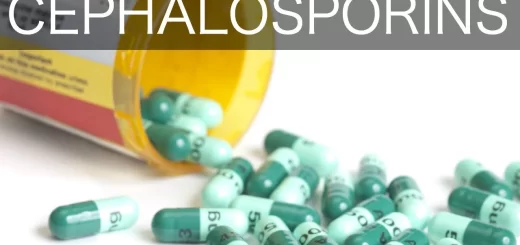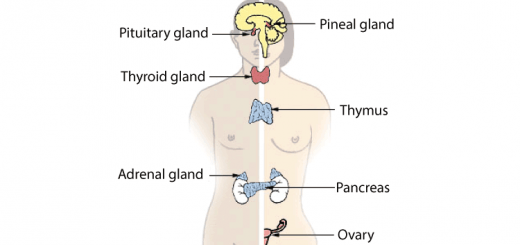Antifungal drugs definition, types, side effects and mechanism of action
Antifungal drugs could be classified according to their therapeutic use into: Systemically administered (oral or parenteral) antifungal drugs for systemic (invasive) fungal infections, Oral antifungal drugs for mucocutaneous superficial fungal infections, and Topically applied antifungal drugs for mucocutaneous fungal infections.
Antifungal drugs
They could be classified according to their mechanism of action into:
- Disrupt fungal cell membrane ergosterol: Azoles, Polyenes (amphotericin and nystatin), Allylamines (terbinafine).
- Disrupt cell wall Echinocandins (caspofungin).
- Block nucleic acid synthesis: Flucytosine.
- Disrupt microtubular Junctions: Griseofulvin.
Systemic Antifungal drugs for systemic infections
1- Amphotericin B (AMB)
It is a broad-spectrum antifungal drug often used as the initial induction regimen for serious fungal infections and then replaced by one of the less toxic drugs. The drug is poorly absorbed from the gastrointestinal tract and thus must be administered intravenously to treat systemic fungal infections, Aerosol delivery has been found effective in the treatment of some pulmonary fungal infections.
Mechanism of action
Amphotericin B binds to ergosterol in the plasma membranes of fungal cells, There, it forms pores (channels) that disrupt membrane function, allowing electrolytes (particularly potassium and small molecules to leak from the cell, resulting in cell death.
Adverse Reactions
- Infusion-related, chills, fever, muscle spasms, vomiting, and hypotension, These could be attenuated by slowing infusion rate and premedication with antihistamines and antipyretics.
- Cumulative toxicity (dose limiting): nephrotoxicity, and anemia due to decreased renal erythropoietin formation, To minimize nephrotoxicity, sodium loading with infusions of normal saline is used.
- Hypotension: The shock-like fall in the blood pressure accompanied by hypokalemia may occur, requiring potassium supplementation.
- Thrombophlebitis: Adding heparin to the infusion can alleviate this problem.
New lipid formulations of AMB have been developed to serve as an amphotericin reservoir and to reduce nonspecific binding to human cell membranes, These lipid formulations offer several advantages over conventional AMB, including a decrease in infusion-associated adverse reactions and a marked decrease in nephrotoxicity (possibly because of decreased binding of the drug to renal cells), Because the lipid formulations are much more expensive, their use is usually restricted to patients intolerant to, or not responding to conventional amphotericin treatment.
2- Flucytosine
Flucytosine is a narrow-spectrum antifungal drug.
Mechanism of action
Flucytosine is accumulated in fungal cells by the action of a membrane permease and converted by cytosine deaminase to 5-FU an inhibitor of thymidylate synthase that disrupts protein synthesis, Selective toxicity occurs because mammalian cells have low levels of permease and deaminase, Flucytosine is often used orally in combination to avoid the development of resistance and for synergistic actions.
Adverse Reactions: bone marrow toxicity, elevated hepatic enzyme, and alopecia.
3- Azoles
Azoles are broad-spectrum antifungal drugs used in the treatment of amphotericin-resistant organisms, They can be given orally or intravenously.
Mechanism of action
Azoles interfere with fungal cell membrane permeability by inhibiting the synthesis of ergosterol, These drug act at the step of (14α-demethylation of lanosterol, which is catalyzed by a fungal cytochrome P450 isozyme, They inhibit cytochrome P450-dependent enzymes involved in the biosynthesis of cell membrane sterols.
Azoles are classified into:
- Imidazoles: eg. Ketoconazole and clotrimazole.
- Triazoles: First generation (itraconazole & fluconazole) and second generation (eg. voriconazole).
- All azole antifungals undergo some degree of hepatic metabolism, Itraconazole and voriconazole are highly dependent on metabolism for drug elimination, and Fluconazole is mainly excreted unchanged in the urine.
Triazoles differ from imidazoles in that they:
- have a broader antifungal spectrum than imidazoles.
- achieve better distribution into body fluids.
- produce less effect on human steroid synthesis because they have a greater affinity for fungal compared to mammalian P450 enzymes, Thus, their safety profile is significantly improved over imidazoles.
- have broad applications in therapy for both superficial and invasive fungal infections.
Therapeutic Use
The use of imidazoles is limited to treating superficial fungal infections, Second-generation triazoles differ from first-generation triazoles in having an extended spectrum of activity and being active against fluconazole-resistant species.
Adverse Reactions
In general, triazoles are relatively safe, even when used for prolonged periods. Adverse effects include vomiting, diarrhea, rash, and sometimes hepatotoxicity (ranging from mild transient elevation in transaminases to clinical hepatitis and liver failure), especially in patients with preexisting liver dysfunction. These reactions are idiosyncratic.
Imidazoles interfere with the synthesis of gonadal and adrenal steroids because of inhibition of human cytochrome P450 leading to gynecomastia, menstrual irregularities, and infertility.
Drug interactions
All azole antifungal agents inhibit CYP3A4, which is the principal drug metabolising enzyme in humans. Therefore, they can potentially interact with many drug classes e g. benzodiazepines. immunosuppressants, statins, phenytoin, and warfarin. The potential for drug-drug interactions is greatest for itraconazole and voriconazole, but lower for fluconazole.
4- Echinocandins
Echinocandins have poor oral absorption and current agents are available only in the intravenous formulation.
Mechanism of action
The echinocandins have a unique fungicidal action, inhibiting the synthesis of β (1-3) glucan, a critical component of fungal cell walls, They are as effective as AMB but toxicity associated with echinocandins is infrequent because their action is specific to fungal cell walls (glucan is not found in mammalian cells), They are not metabolized via the cytochrome P450 enzymes; thus, drug-drug interactions are minimal. Adverse reactions include histamine release reactions (irritation at the infusion site, headache, and rash) and fever.
Systemic antifungal drugs for mucocutaneous infections
1- Azoles
- Imidazoles: e.g, ketoconazole.
- Triazoles: e.g. fluconazole and voriconazole.
They are effective against dermatophytes (tinea) and candidiasis (thrush).
2- Griseofulvin
It is given orally for the treatment of Dermatophyte infections such as tinea infections of the skin. After oral absorption, it is taken up selectively by newly formed skin and concentrated in keratin.
Mechanism of action
Griseofulvin disrupts the mitotic spindle and inhibition of fungal mitosis.
Adverse Reactions: Allergic reactions, hepatotoxicity, and bone marrow suppression.
Drug Interactions: Griseofulvin is a P450 inducer, Thus, it can interact with concomitantly administered drugs reducing their efficacy.
Triazoles and terbinafine represent effective alternatives to griseofulvin that have adverse reactions. They are taken continuously for 12 weeks to treat toenail infections and for six weeks to treat fingernail infections.
3- Terbinafine
It is used in the treatment of dermatophyte infection.
Mechanism of action
It acts by inhibiting squalene epoxidase, thereby blocking the biosynthesis of ergosterol, an essential component of the fungal cell membrane, Accumulation of toxic amounts of squalene results in increased membrane permeability and death of the fungal cell.
Terbinafine accumulates in skin, nails, and subcutaneous fat. It is more effective than griseofulvin and azoles.
Adverse Reactions: Rare consisting mainly of gastrointestinal upsets and headaches.
Topical antifungal drugs for mucocutaneous infections
1- Nystatin
Nystatin is not absorbed from the gastrointestinal tract when it is administered orally and hence it has no systemic effect. Oral use is limited by its unpleasant taste. Therefore, it is only used topically and is never administered parenterally because of its serious systemic toxicity.
2- Topical amphotericin B
Adverse Reactions: Local irritation occasionally occurs, and hypersensitivity is exceedingly rare. Both nystatin and amphotericin are not effective against dermatophytes. They are effective against candida infection only.
3- Topical terbinafine
Terbinafine is available as a cream for topical application and is highly effective against dermatophytes.
4- Topical azoles
Miconazole, clotrimazole, and several other azoles are used for the topical treatment of dermatophytes and candidiasis.
You can follow science online on YouTube from this link: Science online
You can download Science online application on Google Play from this link: Science online Apps on Google Play
Types of protein synthesis inhibitors antibiotics & Uses of individual aminoglycosides
Antibacterial drugs definition, use & types, Penicillin classification & Importance
Antimicrobial drugs types, use, side effects, resistance & Empiric antimicrobial therapy
Vaccines types, Live vaccines, Inactivated vaccines, Subunit vaccines, Naked DNA & mRNA vaccines




